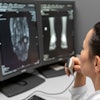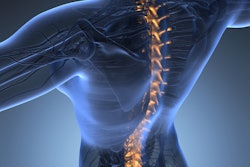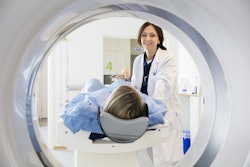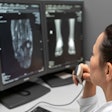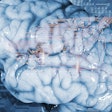A deep-learning algorithm based on MR images can differentiate between different spinal pathologies, according to a study published October 4 in The Spine Journal.
Researchers led by Oz Haim, MD, from the Tel Aviv Medical Center in Israel found that their algorithm had moderate accuracy for a validation dataset, and high accuracy for the test dataset
“This study provides a proof-of-concept for predicting spinal pathologies solely by MRI-based deep learning technology, allowing for a rapid, targeted, and cost-effective work-up and subsequent treatment,” Haim and colleagues wrote.
Spinal pathologies come in many forms. These include trauma, degenerative diseases, infections, neoplasms, and inflammatory conditions, among others. This makes clinical judgment using lab findings and radiological exams important in determining the best course of action for diagnosis and treatment. Biopsy is the go-to route for the final determination of diagnosis, but this is invasive and costly.
The Haim team wanted to develop its deep-learning algorithm to differentiate between the most reported spinal pathologies. The algorithm, which was built on the Fast.ai framework on top of the PyTorch environment, is based on preoperative MRI and postoperative pathological results. The team split the training and validation dataset in a five-fold cross-validation manner.
The study included data from 231 patients with the following spinal pathologies: carcinoma (n = 80), infection (n = 57), meningioma (n = 52) and schwannoma (n = 42).
The researchers found that the average overall accuracy was 0.78 for the validation set and 0.93 for the test set.
| Performance of deep-learning model on differentiating between spinal pathologies |
||||
|---|---|---|---|---|
| Spinal pathologies |
Validation set |
Test set |
||
| |
Precision |
Recall |
Precision |
Recall |
| Carcinoma |
0.85 |
0.68 |
0.87 |
1 |
| Infection |
0.66 |
0.82 |
1 |
0.77 |
| Meningioma |
0.88 |
0.84 |
0.97 |
0.97 |
| Schwannoma |
0.76 |
0.8 |
0.97 |
0.97 |
The study authors suggested that while their deep learning algorithm is not as accurate as a pathology-based report, it “reflects the promising potential” of algorithms in timely prediction of spinal pathologies. This includes avoiding risks and complications tied to invasive procedures like biopsies.
They called for future studies to combine larger datasets of patients with different pathologies to test the algorithm’s generalizability, and also noted that more research on the clinical feasibility of using deep learning approaches to distinguish between spinal pathologies based on MRI is needed.
“Although based on a relatively small, segregated cohort, this study represents the power of deep learning tools in prediction spinal pathologies and lays the foundations for developing deep learning-based algorithms for this purpose,” the authors wrote.
The full study can be found here.

